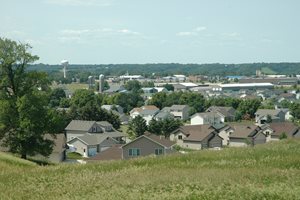Forecasted household growth and future housing needs go hand in hand. Land use plans are the primary guidance communities have to accommodate household growth. Accommodating new affordable housing can be particularly challenging. A significant share of the household growth expected between 2021 and 2030 will be at income levels in need of affordable housing.
For communities that have forecasted growth in sewer-serviced areas, projected affordable housing needs are allocated by the Council and must be addressed through density minimums. Some communities are not anticipating sewer-serviced growth and therefore do not have an allocation of affordable housing need, nor must they guide land at minimum densities to support the development of affordable housing.
 Minimum Requirements:
Minimum Requirements: 
For Those Communities With An Affordable Housing Need Allocation:
-
Acknowledge your community’s allocation of the region’s need for affordable housing at three levels of affordability: <30% AMI, 31-50% AMI, and 51-80% AMI. How is this calculated?
-
Guide residential land at densities sufficient to create opportunities for affordable housing using one of the following options:
-
Option 1: Guide sufficient land at minimum residential densities of 8 units/acre to support your community’s total allocation of affordable housing need for 2021 – 2030. This option may be best for communities that find it difficult to support densities of 12 units/acre (per Option 2), or prefer simplicity over flexibility in their density minimums.
-
Option 2: Guide sufficient land at minimum residential densities of:
-
12 units/acre to address your community’s allocation of affordable housing need at <50% AMI. This combines your community’s allocation at <30% AMI and 31-50% AMI.
-
6 units/acre to address your community’s allocation of affordable housing need at 51-80% AMI.

Option 2 may be best for communities that feel they can achieve affordable housing needs at 51-80% AMI with less than 8 units/acre. It also allows the affordable housing need to be addressed with less actual land, as is the case if communities choose to use even higher densities than are required. Furthermore, communities using Option 2 may guide land to meet their allocation of affordable housing need at 51-80% AMI using a minimum density range of 3-6 units/acre if they have demonstrated in the last 10 years the application of programs, ordinances, and/or local fiscal devices that led to the development of housing affordable at 51-80% AMI in their community. Examples include: density bonuses for affordable housing unit inclusion, local funding programs such as TIF, etc.

Get More Out of Your Plan:
-
Often the minimum densities required are still not adequate to promote land availability for affordable housing. Exceeding the minimum densities, especially in strategic locations such as near transit or where scarce affordable housing is currently available, is encouraged.
-
Incorporate views of nature when possible. A view of nature has been shown to improve overall job satisfaction, reduce number of physical ailments, improve test scores, shorten post-operative hospital stays and decrease use of pain medication. (Minnesota Healthy Planning: How-To Guide, page 19)
-
Create ordinances that increase flexibility to promote lifecycle housing. Lifecycle housing can provide appropriately sized housing for all stages of life including young professionals, families, empty-nesters and elderly. (Minnesota Healthy Planning: How-To Guide, page 33)
-
Consider how the community is projected to grow to avoid overcrowding, which may be an issue in communities with expanding populations of families. Overcrowding is associated with health impacts, including physical issues, mental health issues and personal safety. (Minnesota Healthy Planning: How-To Guide, page 33)
-
Consider the needs of the growing elderly population. They may desire smaller housing units, housing without stairs and housing closer to services that increase accessibility. (Minnesota Healthy Planning: How-To Guide, page 33)

We Can Help!